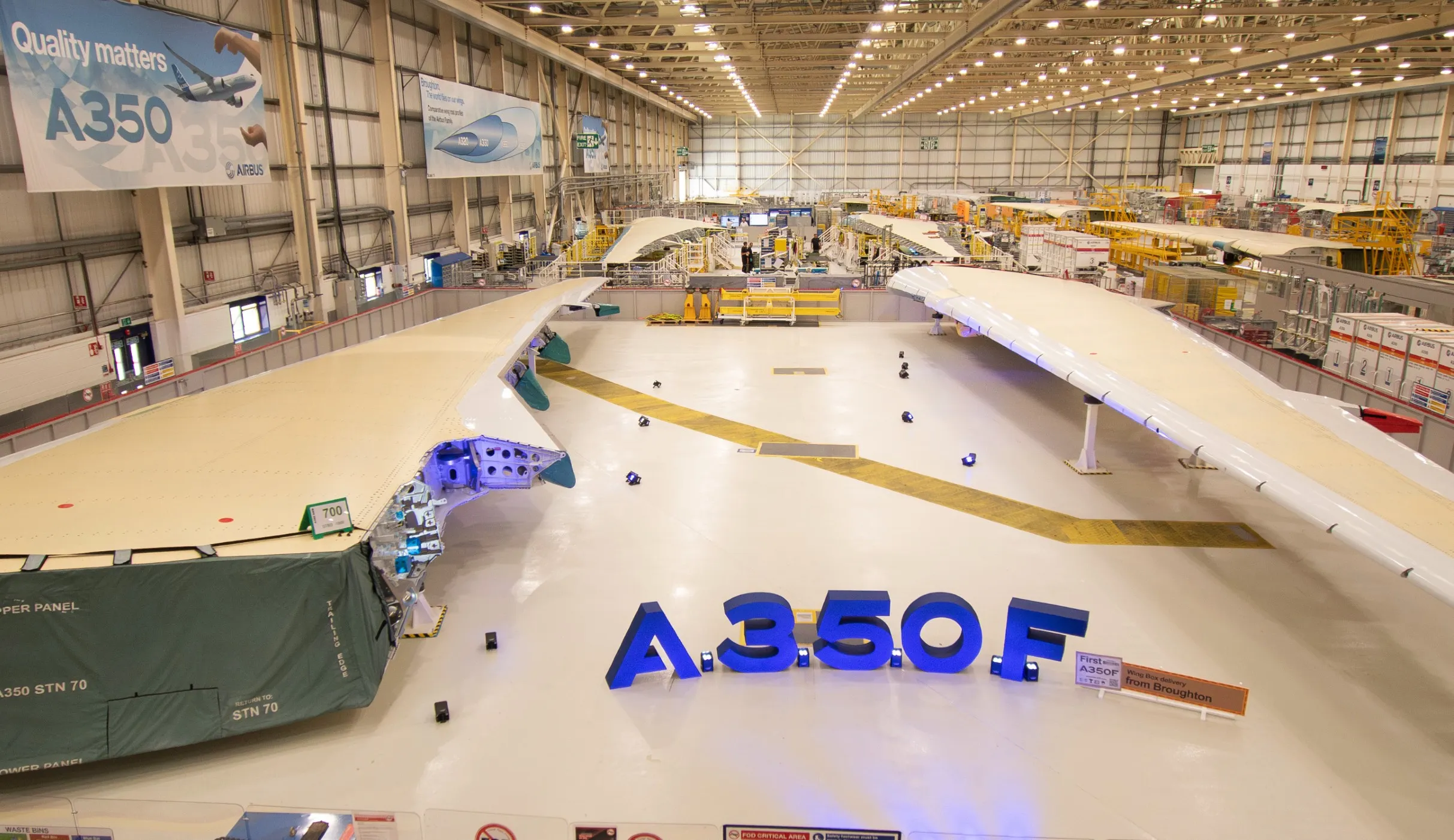TOULOUSE — Airbus has taken a step forward in its A350 freighter program with the arrival of the first fuselage sections at its Toulouse final assembly line. As reported by FlightGlobal, the forward fuselage sections (11-14) and central fuselage sections (15-21) were shipped from Montoir-de-Bretagne, marking the start of the aircraft’s real assembly journey.
The A350 freighter, Airbus’s answer to growing demand in the cargo sector, is seeing steady progress. Airbus Atlantic, the division responsible for the forward and centre fuselages, has been busy equipping these sections before shipping them to Toulouse. The team at Montoir-de-Bretagne has been preparing the sections for months, and their arrival now allows final assembly to begin.
Earlier this year, Airbus completed the first set of A350 freighter wings in Broughton, UK. With fuselage and wings converging in Toulouse, the aircraft is expected to move toward flight testing soon. Originally slated to enter service in 2026, the freighter now looks set to join operators in the second half of 2027.
About the Airbus A350 Freighter
The Airbus A350 Freighter (A350F) is a next-generation widebody cargo aircraft designed to meet the evolving demands of the global air freight industry. Let’s have a look at the specifications:
- Payload Capacity: The A350F can carry up to 111 tonnes, making it one of the most capable large freighters flying today. This large capacity enables it to transport heavy and oversized cargo, such as large engines or industrial equipment, over long global routes. Its design also makes loading standard containers and pallets easier, which helps with operational efficiency.
- Range: With a range of about 4,700 nautical miles, the A350F can reach major trade hubs non-stop, even when fully loaded. That means airlines can operate long-haul flights without having to make stops, which saves time and cuts costs.
- Fuel Efficiency: Compared to the aircraft it replaces, the A350F burns around 40% less fuel and emits much less CO₂, meeting ICAO CO₂ standards for 2027. This comes from better aerodynamics, lighter materials, and the Rolls-Royce Trent XWB-97K engines that are designed for efficiency and lower emissions.
- Cargo Volume: Airbus says the A350F has about the same cargo volume as the Boeing 747-400F. This makes the A350F a strong choice for large freighter operations, offering similar capacity with newer, more efficient technology. Its main deck can fit 30 standard containers, and the lower deck can hold 40 LD3 containers, giving airlines flexibility to load in different ways.
- Advanced Materials: More than 70% of the airframe is built from materials like titanium and aluminium, which keep the plane lighter and more fuel-efficient. It also makes the aircraft more challenging and resistant to corrosion, making maintenance easier and extending its service life.
- Reliability: The A350F keeps the same high reliability as the A350 passenger planes, with a 99.5% operability rate. Its advanced systems and similarity with other A350s make maintenance and training easier, so airlines can depend on it without too much hassle.
(Factsheet sourced from Airbus)
Looking Ahead
For Airbus, the A350 freighter represents more than just another aircraft. It’s a strategic push into the cargo market, offering airlines a modern, fuel-efficient option for long-haul freight.
From the first sections leaving Montoir-de-Bretagne to the final wings joining in Toulouse, it’s a reminder of how much coordination and precision go into building these giant freighters.
Stay tuned to Airways and follow us on LinkedIn and Instagram for the latest updates.




